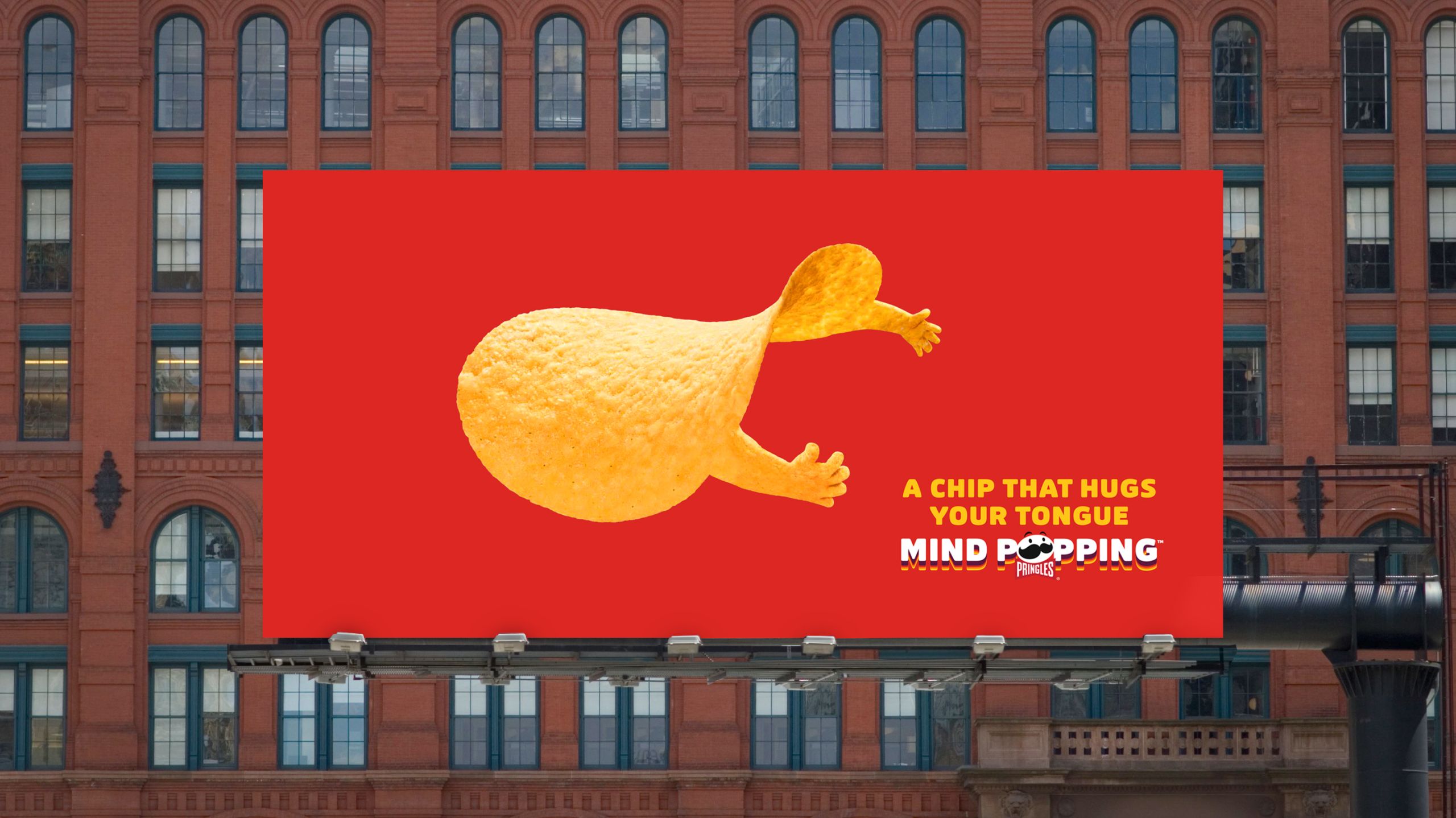Ever wondered how those perfectly stackable, uniquely shaped potato crisps make their way from a factory to your snack bowl? Pringles, with their signature crunch and iconic can, have become a staple in many households around the world. In this blog post, we’ll dive deep into the tantalizing world of Pringles, exploring not only the nostalgic flavors but also the fascinating manufacturing process highlighted by Dailymotion. So, grab a can of your favorite flavor and let’s get started on this flavorful journey!
The History of Pringles

Pringles have a rich and interesting history that began back in the 1960s. Here’s a quick overview of how these beloved snacks came to life:
- 1967: The birth year of Pringles can be traced back to when Procter & Gamble hired Fredric J. Baur, a food scientist, to create a new type of potato chip. Baur was determined to create a snack that didn’t break easily, lacked grease, and had a consistent shape.
- 1975: After years of research and development, Pringles officially hit the market. They were first introduced in the U.S. and quickly gained popularity for their unique flavor and shape—hence the "stackable" design.
- 1980s-1990s: Pringles expanded globally, launching in various countries and introducing a multitude of flavors. Who could forget the outrageous combinations like pizza or sour cream and onion?
- 1994: Procter & Gamble announced that Pringles would be sold to Kellogg's as they shifted focus to core products. The iconic snack continued to thrive and innovate under Kellogg's ownership.
- Present Day: Pringles continues to be a household name, with over 100 different flavors worldwide, demonstrating the brand’s commitment to variety and customer satisfaction.
From its initial inception to becoming a global sensation, the journey of Pringles is a delightful tale filled with innovation and nostalgia. It's this blend of creativity and flavor that keeps us coming back for more! Whether you love the classic original or fancy trying one of the quirky limited-time offerings, there’s truly a Pringle for everyone.
Also Read This: Download MP4 from Dailymotion Effortlessly Fast for Free
The Ingredients of Pringles

When you pop open a can of Pringles, do you ever wonder what exactly goes into those perfectly uniform, stackable chips? The ingredients might surprise you! Pringles are crafted from a blend of various components, making them distinct from traditional potato chips.
Here’s a handy breakdown of the main ingredients:
- Dehydrated Potatoes: Unlike regular potato chips that use real sliced potatoes, Pringles start with dehydrated potato flakes. This gives Pringles that signature texture and helps maintain consistency in every chip.
- Corn Starch: This adds crunch and a lightness to the chips. It also helps bind the ingredients together, ensuring that each bite is satisfying.
- Vegetable Oils: Oils like corn or sunflower oil are used in the frying process, contributing to that delicious, satisfying crunch we all love.
- Flour: A blend of wheat and other flours is utilized to improve the overall texture, enhancing the crispiness while reducing the risk of breakage during production.
- Seasonings: From classic salt to zesty BBQ or unique flavors like Pizza, the seasonings used are what set Pringles apart. The secret blends create a tastiness that keeps people reaching for more!
So the next time you enjoy Pringles, remember that they are a precise blend of ingredients designed to deliver a perfect snacking experience, unlike any other chip out there!
Also Read This: What Plants Talk About on Dailymotion? Understanding Nature Documentaries
The Manufacturing Process
The journey of Pringles from the ingredient stage to the shelf involves a fascinating and precise manufacturing process! Let’s break it down step by step so we can appreciate the science and art behind every crisp bite.
- Mixing Ingredients: The first step kicks off in large mixing machines, where the dehydrated potato flakes, corn starch, vegetable oil, and flour come together. This mixture is shaped into a uniform dough to ensure consistency.
- Forming the Chips: The dough is then passed through a series of rollers that create thin sheets. These sheets are cut into circular shapes, which are then pressed into the iconic Pringles shape using a unique method that gives them their distinctive “stackable” design.
- Frying: The formed chips are fried in hot oil. This crucial step gives them their golden color and crispy texture. The frying time and temperature are carefully controlled to ensure uniformity.
- Seasoning: Once fried, the chips are flavor-coated. This is where those tasty seasonings come into play! A special machine evenly coats the chips with a variety of flavors, ensuring that each chip is packed with taste.
- Packaging: Finally, the chips are quickly cooled and transported to automated packaging machines. Here, they are carefully stacked into iconic cylindrical tubes, sealed, and prepared for shipping.
So, the next time you indulge in a can of Pringles, remember that there’s a whole lot of science, precision, and love that goes into creating those crispy, addictive snacks!
Also Read This: How to Wear Modern Hijab Styles on Dailymotion
Quality Control Measures
When it comes to snack foods, quality is everything, don’t you agree? Pringles is no exception. The company employs a series of stringent quality control measures to ensure that every can of chips meets the highest standards. From the moment the raw ingredients arrive at the factory until the final product is packed and ready for shipping, quality checks are routine and thorough.
First and foremost, ingredient quality is paramount. All potato flakes, corn flour, and seasonings undergo rigorous inspections. Here’s how the process works:
- Ingredient Testing: Each batch of raw ingredients is tested for freshness and flavor profile.
- Crisp Texture Evaluation: Texture is examined to ensure that Pringles have their iconic crunch.
- Flavor Consistency: Taste testers sample the chips to check for consistent flavor profiles.
Aside from testing, manufacturing stations are monitored consistently. Cameras and sensors track the production line, ensuring that nothing slips through the cracks. Any deviations can trigger an immediate halt to production to prevent defective product release.
Lastly, before the product ever reaches your hands, a final inspection occurs. Each can is checked for:
- Sealing Integrity: Ensuring the can is properly sealed and airtight to maximize freshness.
- Label Accuracy: Making sure nutritional information and labels are correctly printed.
All these measures contribute to the unforgettable taste and quality you expect when you crack open a can of Pringles!
Also Read This: How to Download Mockups on Behance: Easy Steps to Get the Files You Need
Distribution and Packaging
So, how do those delicious Pringles make it to store shelves? Well, the journey from production to your snack table is quite fascinating. After the quality control process is complete, it’s time to think about packaging and distribution.
First off, Pringles’ unique packaging sets them apart from their competition. Unlike traditional snacks in flimsy bags, Pringles come in stackable tubes that ensure they stay intact during transit. Here’s what makes Pringles packaging so special:
- Durable Design: The cylindrical design minimizes breakage, keeping those chips safe.
- Air Pressure Technology: The cans are filled under controlled conditions to optimize freshness and protect the product inside.
Once the cans are packed, they’re labeled and prepared for distribution. But how exactly does Pringles get from the factory to your local supermarket? Here’s a brief overview:
| Step | Description |
|---|---|
| 1. Warehousing | Packed cans are stored in strategically located warehouses for efficient access. |
| 2. Logistics Management | Advanced logistics software helps determine optimal shipping routes. |
| 3. Distribution Centers | Cans are sent to various distribution centers, strategically located close to retailers. |
| 4. Retail Delivery | Finally, the cans are loaded onto trucks and delivered to grocery stores. |
With so many steps involved, it’s easy to appreciate the effort that goes into delivering the perfect can of Pringles right to your door. The next time you pop open a tube, you'll know just how much goes into that first crunch!
How Pringles Are Made with Dailymotion's Insight into the Process
Pringles, the beloved snack that has gained popularity around the world, has a unique production process that sets it apart from traditional potato chips. Dailymotion’s insights reveal the fascinating journey of how these perfectly shaped crisps are made, from raw ingredients to finished product. Below is a detailed breakdown of this intriguing process.
1. Sourcing Ingredients:
The production of Pringles begins with the careful selection of raw materials, which include:
- Dehydrated potato flakes: The cornerstone ingredient, providing the signature flavor.
- Corn and wheat starch: These give the crisps their unique texture.
- Vegetable oils: Used for frying.
- Seasonings: Added for flavor variety (e.g., BBQ, sour cream & onion).
2. Mixing the Dough:
All sourced ingredients are precisely measured and mixed to create a dough. This process ensures a consistent and smooth texture, which is critical for the perfect Pringle.
3. Shaping the Crisps:
Unlike traditional chips, Pringles are not made from sliced potatoes. Instead, the dough is pushed through a machine that shapes it into the iconic uniform, stackable forms.
4. Frying:
The shaped crisps are then fried in vegetable oil at high temperatures, which results in their crispy texture. This step is crucial for achieving the final crunch.
5. Seasoning:
After frying, the crisps are seasoned while still warm, allowing the flavors to adhere perfectly to the crunchy surface through a coating process.
6. Packaging:
Once seasoned, the Pringles are cooled and then packaged in their signature cylindrical can, which helps keep them fresh and intact during transportation.
In conclusion, the meticulous process of making Pringles combines scientific precision with culinary art, ensuring that each bite meets the high quality and flavor expectations of consumers worldwide.
 admin
admin








